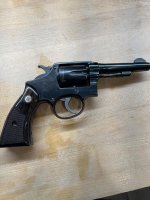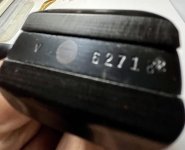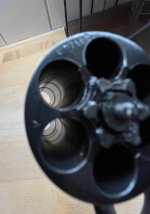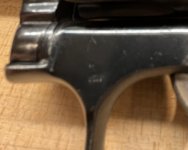I have an old Victory Revolver and the serial number on the butt is V 6271xx with the last 2 digits being much smaller and looking as if they were added separately (almost on top of each other). The number on the cylinder matches, and looks normal. However the number under the yoke is 828xx. There is also a BNP stamp on the left side of the frame.
Based on some of the posts in this forum, I am assuming it may be a returned British Service Revolver reconfigured to use .38 Special rounds for commercial sales? Also the lanyard hole is filled. Were these guns given new serial numbers when converted. Hoping someone can shed some light on this for me.
Based on some of the posts in this forum, I am assuming it may be a returned British Service Revolver reconfigured to use .38 Special rounds for commercial sales? Also the lanyard hole is filled. Were these guns given new serial numbers when converted. Hoping someone can shed some light on this for me.





